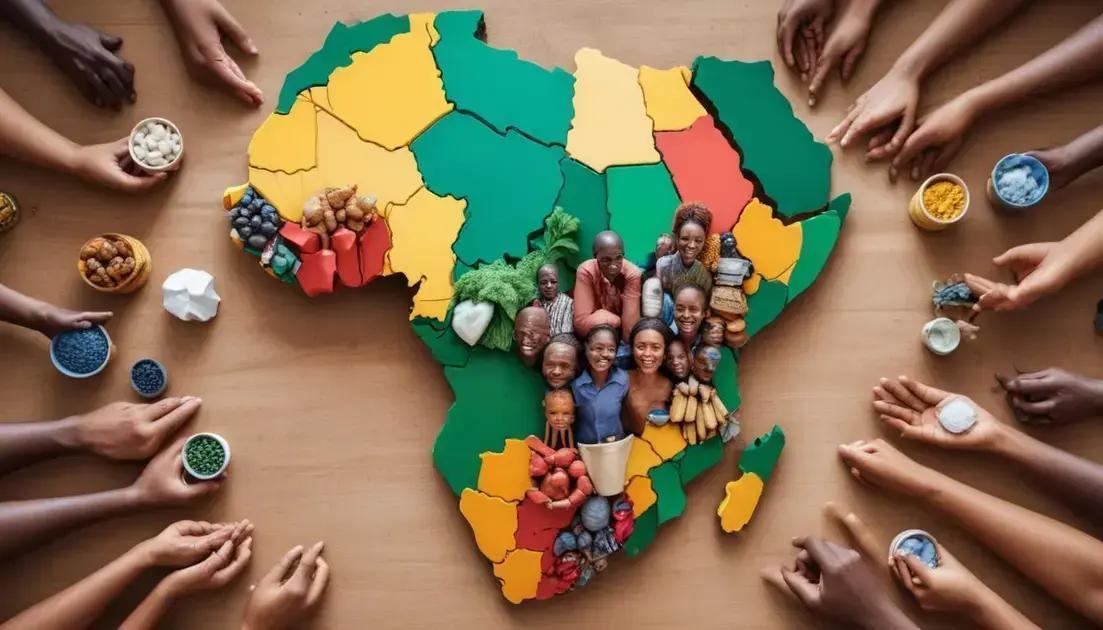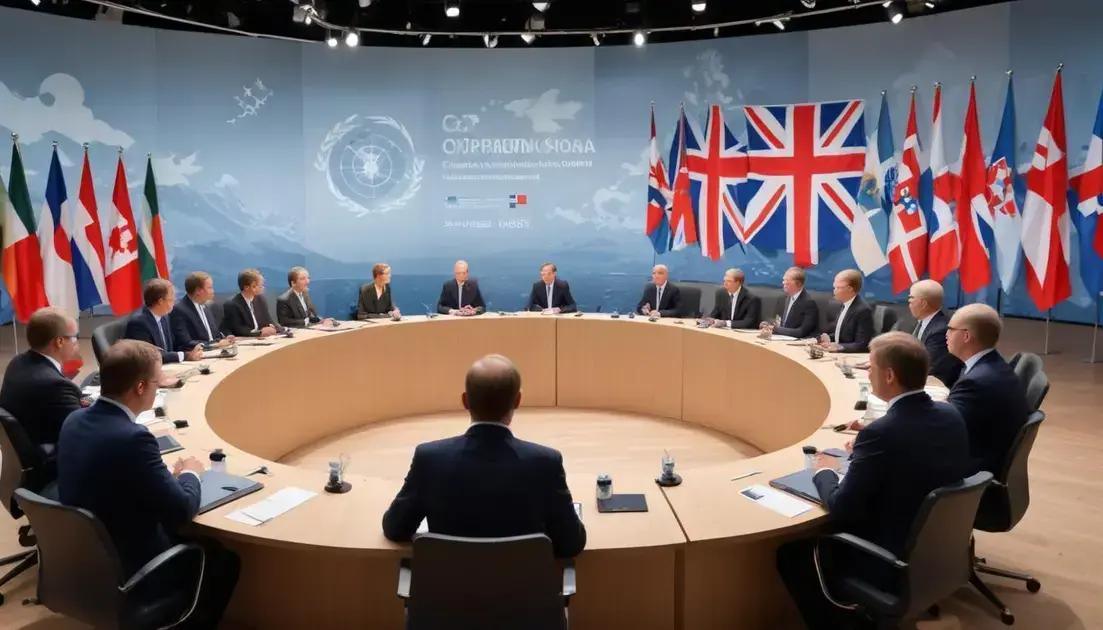
The Creation of the United Nations and Its Role in World Peace
The United Nations (UN) stands as a testament to humanity’s enduring aspiration for peace and international cooperation. Established in the aftermath of the devastating Second World War, the UN’s primary objective is to foster peace, security, and collaboration among its member states. This comprehensive exploration delves into the UN’s genesis, its intricate structure, its pivotal role in maintaining global peace, the challenges it confronts, and its prospective trajectory in shaping a more peaceful and prosperous future.
The Genesis of the United Nations: A Response to Global Catastrophe
The creation of the United Nations was a direct response to the catastrophic consequences of World War II. The conflict claimed tens of millions of lives, leaving a trail of unprecedented destruction across the globe. The League of Nations, established after World War I, had demonstrably failed to prevent the outbreak of another global conflict. Its inherent weaknesses, including an inability to effectively enforce its resolutions and a lack of universal membership, proved fatal to its efficacy. The devastating realities of World War II underscored the critical need for a more robust and inclusive international organization.
During the war, the Allied powers – primarily the United States, the United Kingdom, and the Soviet Union – began laying the groundwork for a new international body. These discussions, often occurring amidst the ongoing hostilities, laid the conceptual foundation for the UN. The Atlantic Charter of 1941, signed by President Franklin D. Roosevelt and Prime Minister Winston Churchill, articulated the shared vision of a post-war world based on collective security and international cooperation. This charter, while not a formal treaty, provided the philosophical impetus for the subsequent creation of the UN.
The formal process of establishing the UN commenced with the Dumbarton Oaks Conference in 1944. Representatives from the US, UK, Soviet Union, and China met to draft a preliminary proposal for the organization’s structure and functions. While disagreements arose amongst the participating nations, notably concerning the composition and powers of the proposed Security Council, the conference represented a crucial step towards the UN’s eventual formation.
The culmination of these efforts materialized in the United Nations Conference on International Organization, held in San Francisco from April 25 to June 26, 1945. Fifty nations participated in this historic conference, representing a broad spectrum of geographical regions and political ideologies. The delegates engaged in intense negotiations, grappling with complex issues related to sovereignty, power-sharing, and the balance between national interests and global concerns. The result of their deliberations was the United Nations Charter, a comprehensive document that outlines the organization’s aims, principles, and structure.
The UN Charter was officially signed on October 24, 1945, by 51 signatory nations. This date is commemorated annually as United Nations Day. However, the UN’s formal inception occurred on January 10, 1946, with the convening of the first session of the General Assembly in London. This marked the official commencement of the UN’s operations and its ambitious mission to build a more peaceful and cooperative international order.
The Architecture of the United Nations: A Complex System of Interconnected Organs
The UN’s organizational structure is multifaceted and intricate, comprising several principal organs, each with distinct responsibilities and mandates. This complex architecture reflects the organization’s ambition to address a wide array of global challenges. The principal organs are designed to function in a coordinated manner, yet each maintains a degree of autonomy to ensure efficient operation.
The General Assembly (GA): The GA is the UN’s primary deliberative and representative organ. All 193 member states are represented in the GA, each possessing one vote. The GA’s role encompasses debating and adopting resolutions on a broad spectrum of international issues, ranging from peace and security to human rights, economic development, and social progress. While the GA’s resolutions are not legally binding in the same way as Security Council decisions, they hold significant moral and political weight. The GA also plays a crucial role in appointing the Secretary-General, electing non-permanent members of the Security Council, and approving the UN’s budget.
The Security Council (SC): The SC bears the primary responsibility for maintaining international peace and security. The SC’s authority surpasses that of the GA, as its resolutions are legally binding under Chapter VII of the UN Charter. The council comprises 15 members: five permanent members (China, France, Russia, the United Kingdom, and the United States – often referred to as the P5) and ten non-permanent members elected by the GA for two-year terms. The P5 possess veto power, meaning any one of them can block a resolution, even if the other fourteen members approve it. This veto power has been a source of both strength and criticism, as it can be used to obstruct actions deemed necessary by the majority of the UN membership. The SC’s powers include authorizing peacekeeping operations, imposing sanctions, and authorizing military intervention.
The Economic and Social Council (ECOSOC): ECOSOC is responsible for coordinating the UN’s economic and social work. It comprises 54 members elected by the GA for three-year terms. ECOSOC works closely with numerous specialized agencies, funds, and programs, including the World Health Organization (WHO), the United Nations Children’s Fund (UNICEF), and the United Nations Development Programme (UNDP). Its mandate encompasses promoting sustainable development, advancing human rights, and fostering economic growth.
The Trusteeship Council: Initially established to oversee the administration of trust territories, the Trusteeship Council has effectively concluded its work and currently suspends its operations.
The International Court of Justice (ICJ): The ICJ is the UN’s principal judicial organ. It settles legal disputes between states and offers advisory opinions on international law. While states are not obligated to comply with ICJ rulings, the court’s judgments play a significant role in shaping international law and promoting the peaceful resolution of disputes.
The Secretariat: The Secretariat, headed by the Secretary-General, constitutes the UN’s administrative arm. It implements the decisions of the other organs and conducts the UN’s day-to-day business. The Secretariat is a large and diverse body comprising staff from all over the world, tasked with carrying out the multifaceted operations of the UN.
The UN’s Pivotal Role in Maintaining World Peace: A Multifaceted Approach
The UN’s commitment to maintaining world peace transcends mere aspiration. It employs a multifaceted approach, combining preventive diplomacy, peacekeeping operations, peacebuilding, and the enforcement of international law. This comprehensive strategy aims to address the root causes of conflict while simultaneously responding to immediate threats to international security.
Peacekeeping Operations: The UN’s peacekeeping operations represent a prominent aspect of its peace and security mandate. These operations involve deploying unarmed or lightly armed personnel to conflict zones to monitor ceasefires, protect civilians, and facilitate peace processes. Peacekeeping missions are typically authorized by the Security Council and operate under strict mandates, designed to ensure impartiality and neutrality. The UN’s peacekeeping endeavors have evolved significantly over time, adapting to increasingly complex conflict situations and integrating elements of peacebuilding and protection of civilians.
Preventive Diplomacy: The UN actively engages in preventive diplomacy to avert conflicts before they escalate into violence. This involves engaging in early warning systems, mediating disputes, promoting dialogue between conflicting parties, and providing good offices to facilitate negotiated settlements. Preventive diplomacy aims to address the underlying causes of conflict, preventing their escalation into widespread violence.
Peacebuilding: Peacebuilding focuses on long-term efforts to establish sustainable peace after conflicts have ended. It encompasses a broad range of activities, including supporting democratic institutions, promoting economic recovery, fostering reconciliation, and strengthening the rule of law. Peacebuilding requires a sustained commitment and cooperation among various actors, including the UN, member states, civil society organizations, and local communities.
Enforcement Actions: In cases where peaceful means fail, the UN may resort to enforcement actions, such as sanctions or military interventions. Sanctions, imposed by the Security Council, aim to exert economic and political pressure on states violating international law or posing a threat to international peace and security. Military interventions, however, are rare and require explicit authorization from the Security Council, reflecting the considerable political weight and sensitivity associated with such actions.
The Challenges Confronting the United Nations: A Complex Landscape of Obstacles
Despite its significant achievements, the UN faces formidable challenges in fulfilling its mandate. These challenges stem from a complex interplay of political, financial, and structural factors.
Funding Limitations: The UN’s operational capacity is significantly constrained by its reliance on voluntary contributions from member states. The unpredictability of these contributions can lead to funding shortfalls, hindering the organization’s ability to execute its programs and respond effectively to crises. The uneven distribution of contributions also raises concerns about impartiality and the influence of powerful member states.
Political Gridlock: The UN’s decision-making processes are frequently hampered by political disagreements among its members. The Security Council’s veto power, for example, can paralyze action even in situations demanding urgent intervention. Differing national interests, geopolitical rivalries, and ideological divisions often create obstacles to achieving consensus and effective action.
Bureaucracy and Inefficiency: The UN’s sheer size and complexity can lead to bureaucratic inefficiencies and delays in responding to crises. Streamlining administrative procedures and enhancing operational efficiency are ongoing challenges that require continuous improvement.
Effectiveness in Conflict Zones: The UN’s effectiveness in conflict zones is often debated. Critics argue that the organization has been slow to respond to certain crises, lacked the capacity to protect civilians effectively in some instances, or become entangled in political controversies that compromise its impartiality.
Emerging Global Challenges: The UN faces a continuously evolving array of challenges, including climate change, terrorism, cyber warfare, and the proliferation of weapons of mass destruction. Adapting to these evolving threats requires ongoing reform and innovation.
The Future of the United Nations: Adapting to a Changing World
The UN’s future trajectory is inextricably linked to its ability to adapt to the evolving challenges of the 21st century. This necessitates a continuous process of reform and innovation. The organization’s effectiveness hinges on several crucial factors:
Strengthened Multilateralism: The UN’s strength lies in its ability to bring diverse nations together to address shared challenges. Reinforcing multilateral cooperation and forging stronger partnerships with regional organizations and civil society will be pivotal to its future success.
Enhanced Transparency and Accountability: Improving the UN’s transparency and accountability mechanisms will help rebuild public trust and ensure that the organization is effectively held responsible for its actions.
Improved Efficiency and Resource Management: Streamlining administrative processes, enhancing resource allocation, and fostering a more efficient use of funds are essential to optimizing the UN’s operational effectiveness.
Adapting to Emerging Challenges: The UN must proactively address emerging global challenges, such as climate change, cybersecurity threats, and pandemics. This requires a flexible and adaptive approach that leverages new technologies and innovative strategies.
Member State Commitment: The ultimate success of the UN rests upon the unwavering commitment of its member states. Providing adequate financial resources, respecting the organization’s mandates, and engaging in constructive dialogue are crucial for ensuring the UN’s continued effectiveness.
Conclusion: The Enduring Relevance of the United Nations
The United Nations, despite its imperfections and the challenges it faces, remains an indispensable pillar of the international order. It represents a unique forum for dialogue, cooperation, and collective action. While criticism is valid and necessary for its continuous improvement, the UN’s fundamental role in promoting peace, security, and cooperation among nations is undeniable. As the world faces increasingly complex and interconnected challenges, the UN’s work in promoting peace, human rights, sustainable development, and global governance will be more critical than ever. The future of the UN, and indeed the future of global peace and security, depends on the collective commitment of its member states and its continuous evolution to meet the ever-changing demands of the international community.


